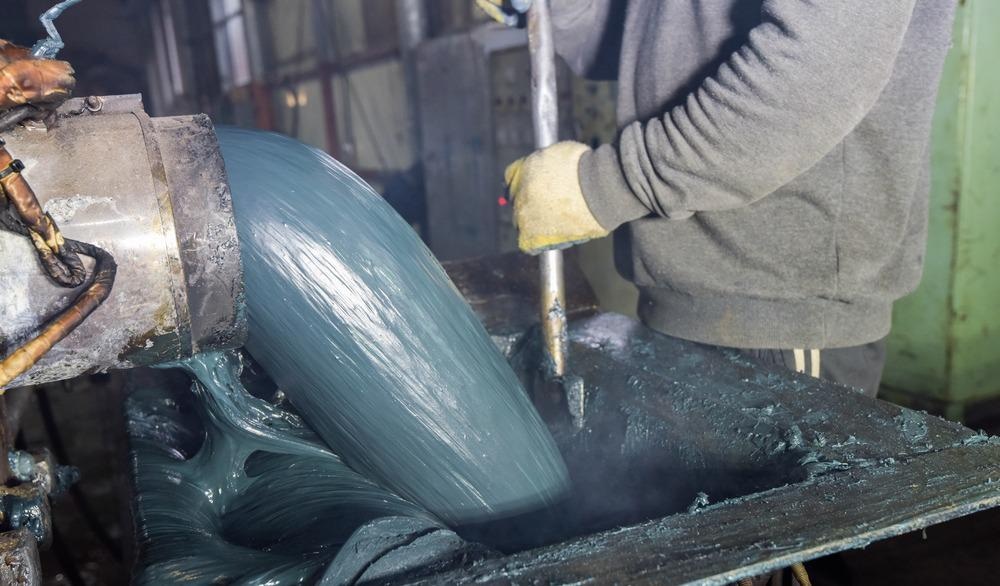
Image Credit: wittaya photo/Shutterstock.com
Composites are materials consisting of more than one material and, while they are incredibly useful, they can be difficult to recycle. Glass and fiber-reinforced polymer composites, in particular, are a challenge. They are used as structural materials in many manufacturing industries, including construction, transport, and energy.
However, once they have reached the end of their useful life, the vast majority of these end up in landfills. The FiberEUse project, initiated by the EU’s Horizon 2020 program, aims to tackle composite recycling and emphasize the importance of moving towards a circular economy.
GFRP – What is it?
Glass fiber-reinforced polymers (GFRP) are a type of plastic containing glass fibers, which are either randomly arranged, woven into the fabric, or flattened into a sheet. The plastic matrix may be a thermoset polymer based on a thermosetting polymer such as epoxy or vinyl ester, or a thermoplastic.
Also known as fiberglass, GFRP has many useful qualities. It is cheap, flexible and strong, non-magnetic, non-conductive and chemically inert, and can easily be molded into complex shapes. This makes it ideal for aircraft, boats, bathtubs and enclosures, swimming pools and hot tubs, and roofing pipes and cladding.
What is CFRP?
Carbon fiber-reinforced polymer (CFRP) is a strong, lightweight plastic containing carbon fibers. It is used anywhere a high-strength-to-weight ratio and stiffness is required, including aerospace, civil engineering, sports equipment and in the superstructure of ships. However, it can be expensive to produce.
CFRP uses a thermoset resin such as epoxy, although other thermosets or thermoplastic polymers such as polyester or vinyl ester are also used.
Creating a Circular Economy
In an ideal world, everything that could be recycled would be, and reused and remanufactured. The idea of a circular economy is important because it favors restoration and regeneration with the aim of tackling the problem of waste. With some materials, this is straightforward, but it is more difficult with end-of-life fiber-reinforced composites.
CFRP and GFRP are hard to recycle. They can undergo mechanical recycling, where components are disassembled from their original composite material-rich products, or pyrolysis, a means of releasing glass and carbon fibers through thermal decomposition at high temperatures.
Historically, there has been little interest in the reuse or remanufacturing of composites. There are many barriers to creating a stable circular value chain for composites, including a lack of business models for boosting profitability, poor customer acceptance of remanufactured goods, and an unstable and unpredictable end-of-life product flow.
The FiberEUse Project
FiberEUse is part of a €9.8 million research project that aims to integrate different innovations to improve the profitability of composite recycling and their reuse in value-added products. A new cloud-based model allows for value-chain incorporation, exploration of new markets, analysis of legislative barriers, and lifecycle assessments for diverse reverse logistic operations.
It aims to support the industry in switching to a circular model. Its objectives include the ability to develop and demonstrate on a large scale the integration of innovative remanufacturing technology to develop the profitable reuse of mechanically or thermally recycled end-of-life GFRP and CFRP, and to develop a roadmap between stakeholders for recycling, reuse and remanufacture of plastic composites.
Several successful case studies demonstrate the project’s viability. The first validates the mechanical recycling of short GFRP and their reuse in added-value customized applications.
It takes end-of-life wind turbines and aerospace components and remanufactures them into bathtubs and shower trays, creative products such as packaging, and sports equipment like skis using emerging manufacturing techniques such as UV-assisted 3D printing and metallization by Physical Vapor Deposition.
The second demonstrates the thermal recycling of long GFRP and CFRP fibers and their reuse in high-tech high-resistance applications. It uses aerospace and structural automotive components and utilizes pyrolysis and custom manufacturing to make structural car components and thermally recycled GFRP for industries such as roofing.
A third considers the inspection, repair and remanufacture for end-of-life CFRP products. It uses adaptive design and manufacturing criteria to create a complete circular economy within the automotive sector by redesigning lightweight car composite structures for reuse, for example, modular body structures and car seats for easy detaching of components for remanufacturing and reuse.
Benefits
Implementing a sustainable composite circular economy will decrease waste and help reduce the prices of GFRP and CFRP. It’s likely to benefit the automotive and aeronautics sectors and wind energy systems. It could save 1.75 TWh of energy per year, prevent 1200 kTons of carbon dioxide emissions, and stop 33.8 kTons of composites from being sent to landfills every year.
Tackling the problem of plastic waste is not easy; many are simply considered to be the ‘wrong type’ of plastic, but consumers and industry are now realizing the importance of recycling and reusing plastics for the benefit of the economy and the environment.
References and Further Reading
FiberEUse: https://fibereuselibrary.com/. Accessed 21st May 2021.
Cordis EU Research Results (2021) Large scale demonstration of new circular economy value-chains based on the reuse of end-of-life fiber reinforced composites. Cordis: https://cordis.europa.eu/project/id/730323. Accessed 21st May 2021.
Crook, L. (2020) FiberEUse installation advocates transition to circular economy Dezeen: https://www.dezeen.com/2020/04/28/fibereuse-installation-ventura-projects-vdf/?li_source=LI. Accessed 21st May 2021.
Disclaimer: The views expressed here are those of the author expressed in their private capacity and do not necessarily represent the views of AZoM.com Limited T/A AZoNetwork the owner and operator of this website. This disclaimer forms part of the Terms and conditions of use of this website.